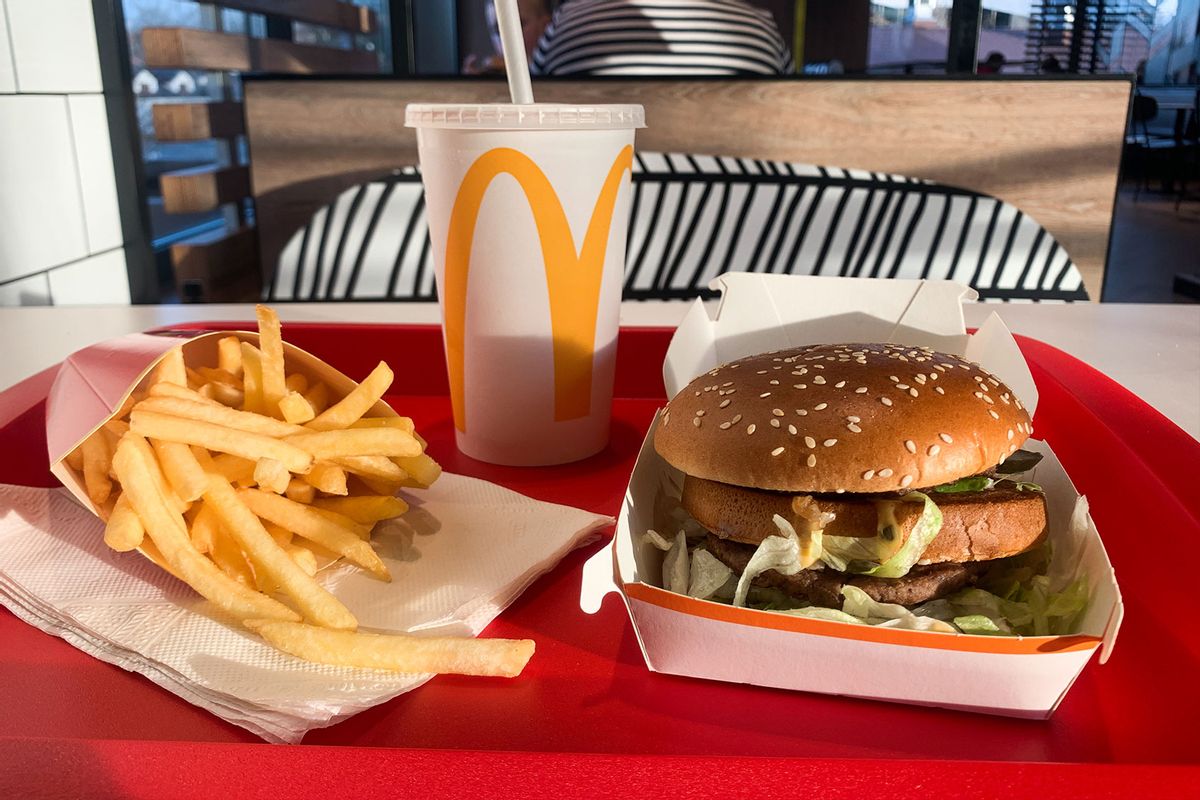Every few weeks since late fall, receipts for an $18 Big Mac meal from a Connecticut rest stop go viral online — with social media users lining up with their own staggering drive-thru receipts and searing comments, many of which communicate something along the lines of the title of a similarly-viral TikTok video, “McDonald’s has gotten too cocky.”
Inflation has been a hot-button issue since the early days of the pandemic, stoked both by supply chain disasters and international conflict, but now consumers are desperate for relief. In decades past, fast food has been a reliable source of hot and cheap meals, but even the price of value meal basics are on the rise. In some locations, a single McDonald’s hash brown costs over $3, while comedian Kevin Fredericks recently released a video bemoaning the seeming lack of a dollar menu. “We used to be a proper country,” he lamented. “$4.29 for a McChicken? $3.19 for just a cheeseburger not even a McDouble cheeseburger, just a cheeseburger? This ain’t no McValue! These are just McPrices, these are just regular McPrices.”
McDonald’s CEO Chris Kempczinski has recently come out and said the company would be focusing on affordability in the next quarter. However, in the meantime, that $18 Big Mac meal has become both a symbol of consumer anxiety — as well as an unexpected economic flashpoint with which Democrats will have to contend in the upcoming election cycle.
It’s not just McDonald’s, of course. Fast food menu prices across the industry rose consistently throughout the pandemic. As reported by CNET, data from Pricelisto, a website that tracks menu prices for United States fast food chains, shows that menu prices were up about 13% from 2021 to 2022. Wendy’s and Chick-fil-A were both on the higher end of price increases, with a respective 35% and 15.6% increase over the previous year’s prices.
In 2023, the numbers only continued to climb; a report from the National Restaurant Association shows that menu prices in September rose by 6% over the same period in 2022.
It’s worth noting that while McDonald’s franchisees set their own prices, there are a few factors underpinning the larger surge. The cost of commodity goods — including beef cattle and grain, the basic ingredients of a burger — rose globally. Supply chain disruptions during the pandemic meant that certain drive-thru staples, like paper napkins, coffee cups, straws and to-go containers, were low on the ground and even more expensive for chains to procure. Additionally, the price of minimum-wage labor, which has supported the fast-food industry for decades, is finally on the rise.
“Even though we’re pushing through pricing, the consumer is tolerating it well,” Kempczinski said in an October analyst call regarding the rising prices on the menu in the U.S., which increased by as much as 10% in 2023.
However, as CNN Business reports, the burger chain is now reporting “weaker-than-expected sales at its US stores,” and a key reason why seems to be that the chain is losing customers — particularly customers making less than $45,000 a year, which has historically been a key demographic for the fast-food industry — due to pricing. “We actually saw that cohort decrease in the most recent quarter,” Kempczinski said in an earnings call on Feb. 5.
We need your help to stay independent
“You're seeing that eating at home is becoming more affordable,” he continued. “That I think is putting some pressure from a IEO [Informal Eating Out] standpoint on that low-income consumer.”
Data about customer attitudes reflects Kempczinski’s assertion. The State of Personal Finance in America survey — which was taken in the second quarter of 2023 — reveals that as essentials have become more expensive, 31% of those who responded reported cutting back on non-essential activities like dining out.
Unease about the current state of the economy goes deeper than just tightening up expenses; per the survey, approximately approximately 49% of Americans report that financial concerns heavily impact their well-being, with 2 out of 5 Americans having experienced anxiety attacks due to money stress. Fifty-nine percent are specifically anxious about affording inflated prices.
The Republican Party has been quick to politicize rising fast-food prices, tying them to pushes for a higher minimum wage. For instance, as Vox reported, in June 2021, the National Republican Congressional Committee (NRCC) — the body responsible for electing a GOP House majority — released “an official statement blaming Joe Biden’s ‘socialist stimulus bill’ for the fact that Chipotle was raising its menu prices by 4 percent in order ‘to cover the cost of increased employee wages.’”
As Allison Morrow wrote last year for CNN Business’ Nightcap newsletter, the fact that Republicans are spinning Big Mac prices as political fodder — and that social media has become an echo chamber for disgruntled customers —is becoming “ an increasingly nettlesome problem for Democratic political strategists and economists who have so far failed to deliver the message that the economy is actually doing great.”
"You're seeing that eating at home is becoming more affordable."
“Despite the inflation hangover keeping prices elevated, the economy, by almost any measure, should be one of the biggest feathers in President Joe Biden’s cap over the past three years,” she wrote. “But American voters keep telling pollsters that they aren’t feeling all the good news that economists are seeing in the data.”
Publications, including the New York Post and Washington Examiner, have linked the high cost of a McDonald’s meal to “Bidenflation” (or as the Examiner put it, “McFlation: Big Mac's price soars in Biden's economy”). As such, it’s growing more and more possible that questions regarding Big Macs will be on the debate menu this year, but in the meantime it looks like McDonald’s customers could have some relief.
In last week’s earnings call, CEO Chris Kempczinski indicated the company would be broadening the options on their D123 menu — named for its $1, $2 and $3 options.
Read more
about this topic



Shares